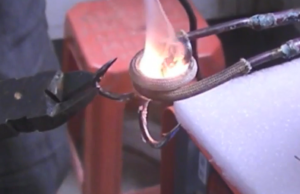How Does Frequency Affect Induction Heating and How to Determine Frequency and Current in Induction Heater

Are you curious about the intricate world of induction heating? Induction heating machines come in various frequency ranges, but did you know that the frequency largely depends on the induction coil? In this informative blog, we will delve into how frequency affects induction heating and guide you on determining the optimal frequency and current for your induction heater.
Contents
Exploring Induction Heating
Induction heating is a fascinating process widely used in various industries, including surface hardening, heat treating, and more. It relies on the principles of electromagnetism, particularly the creation of a magnetic field through an induction coil.
The Role of Frequency
Frequency plays a crucial role in the effectiveness of induction heating. When we mention frequency in this context, we refer to the operating frequency of the induction heating equipment. Frequencies can range from as low as 50 Hz to much higher values, like 500 kW. Understanding how frequency affects induction heating is pivotal for optimizing your heating process.
The Skin Effect
One of the key phenomena influenced by frequency is the skin effect. At higher frequencies, the induced current tends to flow closer to the surface of electrically conductive materials. This effect results in more efficient and uniform heat generation, making higher frequency induction heating suitable for certain applications.
Determining the Right Frequency
So, how do you determine the right frequency and current for your induction heater? The answer lies in understanding the specific requirements of your application. Here are some considerations:
-
Material Type
Different materials have varying responses to induction heating at different frequencies. For instance, high-frequency induction heating is ideal for rapid heating of thin materials, while medium frequencies might be more suitable for bulkier workpieces.
-
Heat Treatment Goals
Your desired heat treatment outcome also plays a significant role in choosing the frequency. Whether you’re aiming for surface hardening or another heat treatment process, the right frequency can make a substantial difference.
-
Power Supply
The power supply, including solid-state power supplies, is another factor to consider. Certain power supplies are designed to operate optimally at specific frequencies, so compatibility is crucial.
Conclusion
In conclusion, understanding how frequency affects induction heating is vital for achieving the desired results in your industrial processes. By considering factors like material type, heat treatment goals, and power supply, you can determine the optimal frequency and current for your induction heater. With this knowledge, you can harness the benefits of induction heating in your operations, whether it’s for surface hardening, heat treating, or other applications.
Explore the fascinating world of induction heating and unlock its potential for your industry. Stay tuned for more insights on induction heating equipment and how it works effectively in various settings.

